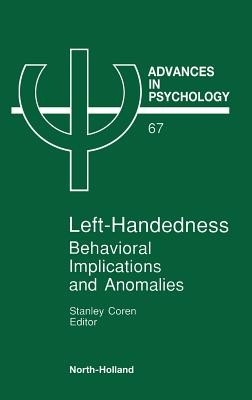
- We will send in 10–14 business days.
- Author: Coren Stanley Ed
- Publisher: Elsevier Bv
- ISBN-10: 0444884386
- ISBN-13: 9780444884381
- Format: 15.6 x 23.4 x 3.3 cm, kieti viršeliai
- Language: English
- SAVE -10% with code: EXTRA
Reviews
Description
Left-handedness has been shown to be a possible marker for various psychological and physical abnormalities. This book presents evidence by a number of researchers who evaluate whether there are indeed differences between left- and right-handers which extend into the broader psychological and physiological realms. Several chapters show that left-handedness is found in unexpectedly high proportions in populations that suffer from various immune deficiency diseases, in alcoholics, dyslexics, mental retardates, psychopaths and other clinical groups. The book indicates why left-handedness should be a marker for such conditions. The genetic and environmental pressures on handedness are explored. A model for pathological left-handedness is presented, along with some interesting data which suggests that left-handedness may be associated with reduced life-span. Finally, several chapters discuss the implications of handedness patterns in non-clinical populations.
EXTRA 10 % discount with code: EXTRA
The promotion ends in 23d.20:28:24
The discount code is valid when purchasing from 10 €. Discounts do not stack.
- Author: Coren Stanley Ed
- Publisher: Elsevier Bv
- ISBN-10: 0444884386
- ISBN-13: 9780444884381
- Format: 15.6 x 23.4 x 3.3 cm, kieti viršeliai
- Language: English English
Left-handedness has been shown to be a possible marker for various psychological and physical abnormalities. This book presents evidence by a number of researchers who evaluate whether there are indeed differences between left- and right-handers which extend into the broader psychological and physiological realms. Several chapters show that left-handedness is found in unexpectedly high proportions in populations that suffer from various immune deficiency diseases, in alcoholics, dyslexics, mental retardates, psychopaths and other clinical groups. The book indicates why left-handedness should be a marker for such conditions. The genetic and environmental pressures on handedness are explored. A model for pathological left-handedness is presented, along with some interesting data which suggests that left-handedness may be associated with reduced life-span. Finally, several chapters discuss the implications of handedness patterns in non-clinical populations.


Reviews